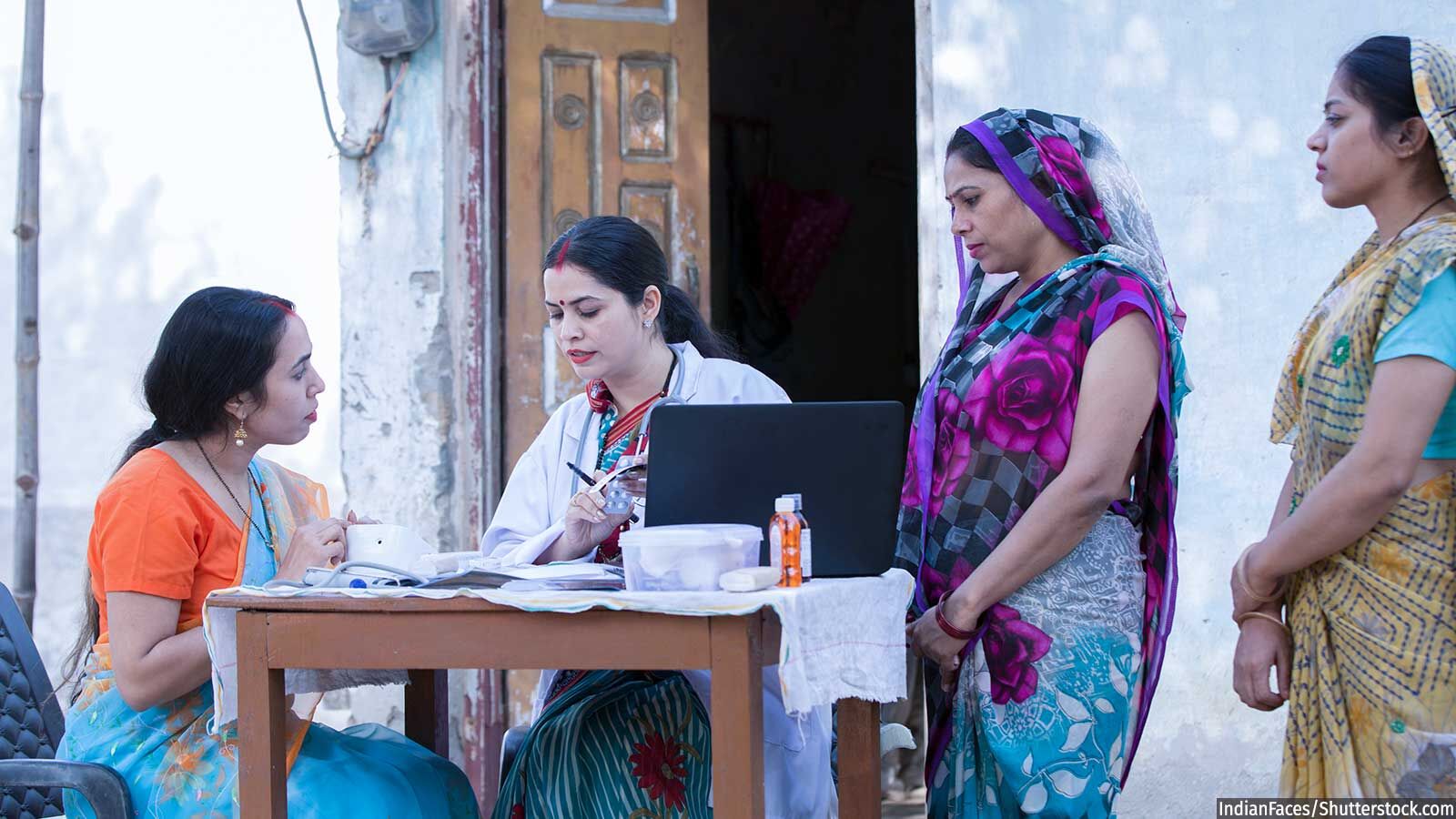DataViz: More Women Used Menstrual Hygiene Products In Rural India In 2019-21
Indicators of preventive health, such as sanitation and access to healthcare, which show how women's health might be impacted in the longer term, have improved in India, shows the fifth National Family Health Survey

Kolkata and Mumbai: Indicators of preventive health, such as menstrual hygiene, sanitation and access to healthcare have improved in India between 2015-16 and 2019-21, show data from the National Family Health Survey.
Preventive healthcare is one of the determinants of women's health outcomes. Preventive healthcare measures, such as regular checks during pregnancy, help catch any health problems early, and measures, such as using hygienic methods of protection during menstruation and sanitation, help avoid the spread of diseases.
"Preventive healthcare includes measures taken to prevent and control spread of diseases, and it includes efforts to improve living conditions and make public health facilities more accessible so that timely testing and screening can be done", said Brinda Viswanathan, a professor of mathematical statistics, interested in gender issues related to nutrition and labour markets, at the Madras School of Economics. "Investing in preventive measures helps ensure a healthier population over the years."
Maternal Care
The Indian government advises at least four antenatal care visits (the World Health Organization recommends eight). These are correlated with institutional births, lower maternal mortality and a higher likelihood of child survival. Six of every 10 women in India received at least four antenatal care visits (for last birth in the five years before the survey) between 2019 and 2021, an increase from five in 10 women in 2015-16.
The greatest improvement was in Uttarakhand (30.9% to 61.8%), Madhya Pradesh (35.7% to 57.5%) and Rajasthan (38.5% to 55.3%).
Menstrual Hygiene & Sanitation
Many women in India use unsafe methods of protection during menstruation, such as cloth or make-do pads stuffed with ash, husk or even sand. Not using hygienic products can result in a variety of health problems, including reproductive and urinary tract infections.
In rural areas, the proportion of women, aged 15-24 years, who use hygienic methods of protection (locally prepared napkins, sanitary napkins, tampons and menstrual cups) during their menstrual period, increased by 24.1 percentage points from 48.2% in 2015-16 to 72.3% in 2019-21.
The urban-rural gap in using safe methods of menstrual protection has also reduced. The highest increase in rural areas was in Odisha (42.8% to 79.5%), Rajasthan (47.9% to 81.9%) and West Bengal (47.6% to 79.7%) between 2015-16 and 2019-21. This could also reflect the success of programmes like Swabhimaan in the states of Odisha, Chhattisgarh and Bihar.
Improvement in sanitation, which the NFHS measures by 'a household having an improved sanitation facility', reduces the spread of several diseases and in the long term, it reduces the severity and impact of malnutrition. For an improved sanitation facility, houses could have a flush to piped sewer system, septic tank or latrine, ventilated improved pit (VIP)/biogas latrine, pit latrine with slab, twin pit/composting toilet, not shared with any other household.
The highest improvement on this indicator was in Chhattisgarh, where it has increased from 34.8% to 76.8%. Bihar is the only state where more than half of the population does not have improved sanitation facilities, both in terms of state average and within the rural population.
Clean Fuel for Cooking
Clean cooking fuel includes electricity, LPG/natural gas and biogas. Around 3.8 million people die each year from illnesses such as pneumonia and lung cancer connected to household air pollution caused by cooking over stoves indoors with solid fuels and kerosene, according to the latest data from the WHO.
After five years of the Pradhan Mantri Ujjwala Yojana scheme, 43.2% of rural India has access to clean fuel, NFHS data show. In 2015-16, overall, 43.8% of households had access to clean fuel. Now 58.6% do. Over 60% of households in Bihar, Odisha, Jharkhand, Chhattisgarh, Meghalaya do not use clean fuel for cooking.
Health Insurance
Four of 10 households in India have at least one member who has access to health insurance or financing for health in 2019-21, up from less than one third in 2015-16. This indicator does not specify if that member was a woman. In addition, research shows that just providing health insurance does not improve women's access to subsidised medical care, we had reported in July 2021.
This could be the impact of the Ayushman Bharat Pradhan Mantri Jan Arogya Yojana (AB-Pmjay), the public health insurance programme which was launched on September 23, 2018, to provide up to ₹5 lakh hospitalisation cover to 100 million poor families in the country. Health insurance coverage in rural areas is 41.4%, whereas in urban areas it is 38.1%, NFHS data show.
Insurance coverage has increased most in Assam (10.4% to 60%) , Rajasthan (18.7% to 87.8%) and Goa (15.9% 66%), while it is still low in Jammu and Kashmir (12.7%) , Manipur (14.2%), Bihar (14.6%) , Uttar Pradesh (15.9%) and Maharashtra (20%), NFHS data show.
We welcome feedback. Please write to respond@indiaspend.org. We reserve the right to edit responses for language and grammar.


